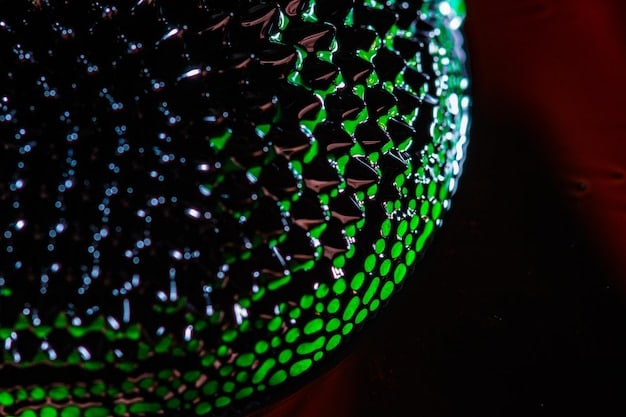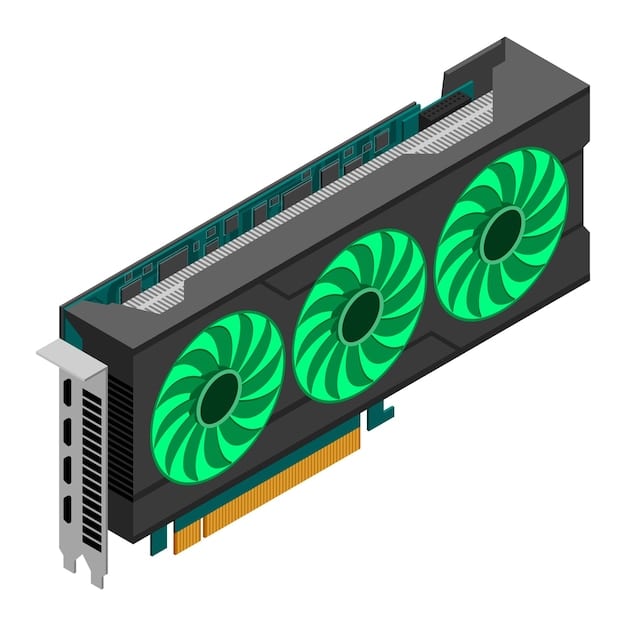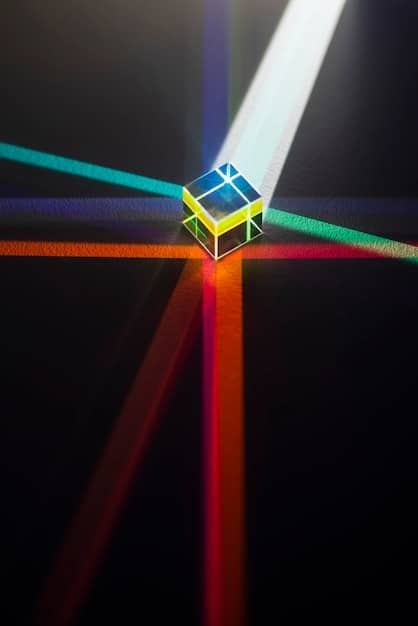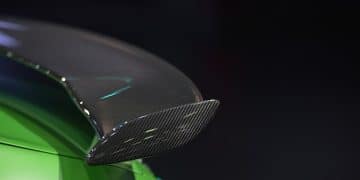Will the RTX 5000 Series Finally End PC Game Lag in 2025?

The NVIDIA RTX 5000 Series, expected in 2025, promises significant performance improvements, potentially reducing or eliminating PC game lag through advanced GPU architecture and enhanced features designed to optimize gaming experiences.
Will the New NVIDIA RTX 5000 Series Eliminate PC Game Lag in 2025? The question on every PC gamer’s mind. Let’s dive into the possibilities of a lag-free future.
Understanding PC Game Lag: A Brief Overview
PC game lag can be incredibly frustrating, ruining the immersion and competitive edge in many games. Understanding the root causes of lag is the first step toward appreciating how the RTX 5000 series could potentially address these issues.
What Causes Game Lag?
Game lag can stem from various sources, including network latency, server issues, and, most commonly, hardware limitations. When your system can’t keep up with the demands of a game, lag becomes noticeable.
The Role of the GPU
The GPU (Graphics Processing Unit) is a crucial component in rendering graphics and handling visual data. A weak or outdated GPU struggles to process complex scenes and high resolutions, leading to frame rate drops and lag.
- Insufficient processing power in the GPU.
- Limited video memory (VRAM) for textures and assets.
- Inefficient cooling, leading to thermal throttling.
Ultimately, understanding these factors helps clarify the potential impact of the RTX 5000 series on gaming performance.
Understanding the factors contributing to PC game lag provides a foundation for evaluating the potential impact of the RTX 5000 series on gaming performance. By addressing the limitations of current hardware, the new series could significantly improve the gaming experience for PC gamers.
The Anticipated Specs of the RTX 5000 Series
The NVIDIA RTX 5000 series is generating considerable buzz, with many speculating about its potential specifications. Leaks and industry insights provide a glimpse into what we might expect from this next-generation GPU.
Architectural Enhancements
It’s likely that the RTX 5000 series will feature a new GPU architecture, possibly named “Lovelace Next” or something similar. This new architecture could bring significant improvements in processing efficiency and overall performance compared to the current Ampere and Ada Lovelace architectures.
Memory and Bandwidth
Increased VRAM and memory bandwidth are also expected, allowing the GPU to handle larger textures and more complex scenes without bottlenecking. This would directly address one of the common causes of game lag.
- Increased CUDA Cores for better parallel processing.
- Higher clock speeds for faster overall performance.
- Improved Ray Tracing capabilities for realistic visuals.

These potential specifications suggest that the RTX 5000 series could offer a substantial leap in performance, making it a promising solution for eliminating PC game lag.
With enhanced architecture, increased memory, and improved bandwidth, the RTX 5000 series appears poised to deliver a significant performance boost, potentially mitigating or eliminating game lag for PC gamers.
How the RTX 5000 Series Aims to Reduce Lag
The key to eliminating PC game lag lies in several critical improvements that the RTX 5000 series is expected to bring. These improvements should optimize game performance and reduce latency.
Improved Frame Rates
One of the most direct ways to combat lag is by increasing frame rates. The RTX 5000 series, with its enhanced processing power, should be able to deliver consistently higher frame rates, resulting in smoother gameplay.
Enhanced Ray Tracing Performance
Ray tracing, while visually impressive, can be resource-intensive and contribute to lag. The RTX 5000 series is expected to offer significant improvements in ray tracing performance, allowing gamers to enjoy realistic visuals without sacrificing frame rates.
- Advanced algorithms for more efficient rendering.
- Optimized drivers for better game compatibility.
- DLSS (Deep Learning Super Sampling) technology to upscale lower-resolution images to higher resolutions with minimal performance impact.
The combination of these improvements should lead to a more responsive and lag-free gaming experience.
By boosting frame rates, improving ray tracing performance, and employing advanced technologies like DLSS, the RTX 5000 series aims to provide a smoother, more enjoyable gaming experience with reduced or eliminated lag.
The Role of DLSS and AI in Lag Reduction
NVIDIA’s Deep Learning Super Sampling (DLSS) technology plays a significant role in reducing lag by leveraging AI to enhance performance. The RTX 5000 series is expected to further refine and expand upon these AI-driven capabilities.
What is DLSS?
DLSS uses AI to render games at a lower resolution and then upscale them to a higher resolution, resulting in improved frame rates without a significant loss in visual quality.
AI-Driven Optimization
The RTX 5000 series could incorporate even more advanced AI algorithms to optimize game settings and improve performance dynamically, further reducing the likelihood of lag.

- Improved AI models for better upscaling quality.
- Dynamic resolution scaling based on real-time performance metrics.
- AI-powered driver optimizations for specific games.
This integration of AI and DLSS underscores NVIDIA’s commitment to using advanced technologies to combat game lag and improve the overall gaming experience.
With the continued refinement of DLSS and the integration of more advanced AI-driven optimizations, the RTX 5000 series is poised to deliver a significant reduction in game lag, making high-fidelity gaming more accessible and enjoyable.
Potential Bottlenecks and Limitations
While the RTX 5000 series holds great promise for eliminating PC game lag, it is essential to consider potential bottlenecks and limitations that could affect its performance.
CPU Limitations
Even with a powerful GPU, a weak or outdated CPU could become a bottleneck, limiting the overall performance of the system. The CPU is responsible for handling game logic, AI, and other tasks, and if it can’t keep up, lag can still occur.
Memory and Storage Constraints
Insufficient RAM or slow storage devices (HDDs vs. SSDs) can also contribute to lag. Games need sufficient memory to load assets and run smoothly, and slow storage can result in longer loading times and stuttering.
Ultimately, a well-rounded system with a powerful CPU, sufficient RAM, and fast storage is necessary to fully realize the potential of the RTX 5000 series and minimize lag.
While the RTX 5000 series promises significant advancements in GPU technology, potential bottlenecks in other system components like CPU, RAM, and storage should be considered to ensure a lag-free gaming experience.
The Future of PC Gaming with the RTX 5000 Series
The introduction of the NVIDIA RTX 5000 series could mark a significant milestone in the evolution of PC gaming. Its potential to eliminate or significantly reduce game lag promises a more immersive and enjoyable experience for gamers.
Enhanced Gaming Experiences
With higher frame rates, improved visuals, and reduced latency, gamers could enjoy more fluid and responsive gameplay, enhancing their overall experience.
New Possibilities for Game Developers
The increased processing power of the RTX 5000 series could also open up new possibilities for game developers, allowing them to create more complex and visually stunning games without worrying about performance constraints.
- More realistic and detailed game worlds.
- Advanced AI and physics simulations.
- Improved multiplayer experiences.
The RTX 5000 series has the potential to revolutionize PC gaming, making it more accessible, immersive, and visually impressive than ever before.
The RTX 5000 series could reshape the landscape of PC gaming, offering enhanced experiences for gamers and enabling new creative possibilities for game developers, thus ushering in a new era of immersive and visually stunning gameplay.
| Key Point | Brief Description |
|---|---|
| 🚀 RTX 5000 Series | Next-gen GPUs aiming for lag-free gaming. |
| 💡 DLSS and AI | Enhancing performance via AI-driven upscaling. |
| ⚙️ Potential Bottlenecks | CPU, RAM, and storage limitations. |
| 🎮 Future of Gaming | Immersive experiences and advanced game development. |
Game lag can be incredibly disruptive when you are trying to immerse yourself in a game. Here are some of the questions that are frequently asked.
Frequently Asked Questions
▼
Yes, it is expected that the RTX 5000 series will be backward compatible with older games. Newer GPUs tend to ensure support through driver updates and architecture designs.
▼
Rumors suggest VRAM configurations from 16GB to 32GB, depending on the specific model. High VRAM is important for gaming at higher resolutions and smoother gameplay.
▼
It depends on your CPU. An older or low-end CPU might bottleneck a high-end GPU. Ensure your CPU can support your GPU, or consider upgrading alongside it.
▼
The RTX 5000 series is anticipated to launch sometime in 2025, but exact dates can vary. NVIDIA typically has big announcements at trade shows.
▼
Yes, the RTX 5000 series is expected to feature enhanced ray tracing capabilities. It will enable more realistic lighting effects with improved efficiency and performance.
Conclusion
In conclusion, the NVIDIA RTX 5000 series presents an exciting prospect for the future of PC gaming, with the potential to significantly reduce or eliminate game lag through advancements in GPU architecture, AI-driven technologies, and enhanced overall performance. While potential bottlenecks in other system components should be considered, the RTX 5000 series promises a more immersive and enjoyable gaming experience for PC enthusiasts.





